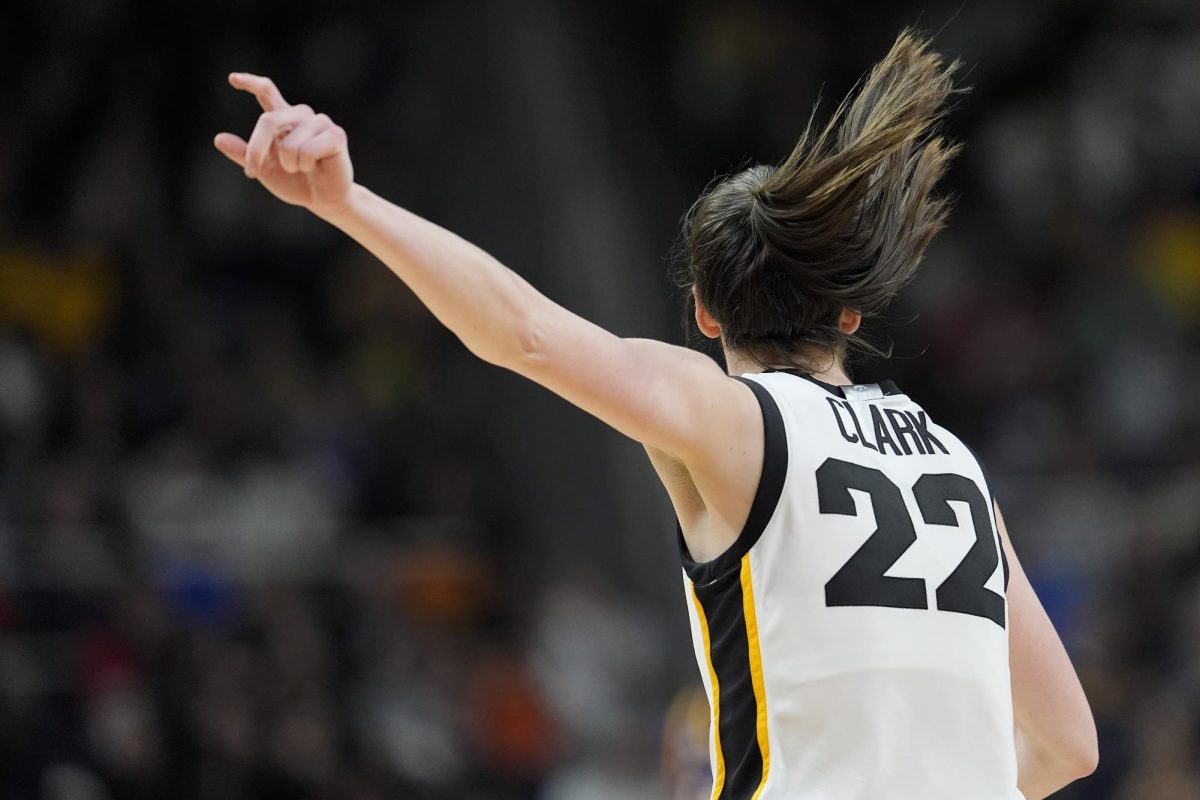When a female athlete claims her deserved place under the spotlight, there’s one trope that always seems to play out among her audience. It’s like a learning curve – a study in adjusting to the discomfort of watching women dominate like male idols dominate.
Reporters ask pointed questions, things they wouldn’t ask male players. Viewers scrutinize her appearance, attitude and behavior instead of her skill. Men on the internet can’t help but remind her that she would be demolished if thrown into a men’s game.
This 2024 season, the NCAA Women’s Tournament slammed a pop-quiz on the desks of collegiate basketball watchers everywhere. It tested their ability to react with any semblance of maturity in the face of blazing female star power, and it came in the form of Iowa Hawkeyes guard Caitlin Clark. She shed light on women’s college basketball’s best angles, and she exposed its audience’s ugliest.
“If you started on your high school basketball team you can beat 100% of all girls college hoopers and 90% of all WNBA players,” @bigticketboss commented on Instagram in December. “Got to remember [Clark’s playing] girls who aren’t really all that athletic in comparison to us.”
In comparison to whom? Never-scouted high school starters? Driveway hoopers? Men in general? I have doubts.
That blatant rejection of her talent was the immediate reaction to Clark’s greatness. As she broke records and played her way to game-changer status, a wave of comments echoing some version of “I could beat Clark 1-on-1 because girls are small and stupid,” flooded social media.
No, you couldn’t beat the girl who led the Hawkeyes to the Final Four for the first time since 1993 in a 1-on-1 match. Not the girl who drew nearly 19 million viewers across ABC and ESPN in her recent championship against the South Carolina Gamecocks – more than any sporting event since 2019, other than football, the World Cup and the Olympics. Especially not the girl who broke almost every major scoring record in the league in just four years.
Not that you’ll ever get the chance. Put the phone down and watch her shoot from near half-court like it’s nothing with the other 19 million of us.
But the Clark-induced learning curve didn’t just bring hate. It also created a comparison game out of women’s college basketball. A great female athlete rises, and audiences pit her against her peers. Clark rose, and her audience found antitheses in UConn Huskies guard Paige Bueckers and LSU Tigers forward Angel Reese.
She’d scuffle with them on the court, occasionally exchanging minor taunts, and every moment was magnified into a vicious, conniving battle of successes – like three women can’t impress simultaneously without crushing each other.
I can’t help but wonder: If it were the men tossing little insults, wouldn’t it just be a lovable, brotherly rivalry? Just boys being boys? Would reporters waste post-game interview time analyzing their drama rather than their game, even after they repeatedly denied any feelings of antagonism between them and their rivals?
That’s another trait of the learning curve: It applies to everyone, even those close to the players. Press rooms this season were full of reporters new to the women’s game, who seemed to think questioning female basketball players is somehow different than questioning male ones.
In the first round of March Madness, a Des Moines Register reporter asked Clark why she looked upset when the Hawkeyes weren’t doing well in the first quarter of Iowa’s game against Holy Cross. She delivered an all-too-familiar response:
“I think I definitely could’ve smiled a little bit more, but hey, I’m competitive,” she said. “I want to win, and I expect us to be really good all the time.”
I doubt a successful male player’s attitude during an upsetting quarter would be questioned, and I doubt he would have to defend how little he smiled, but I guess success looks different across double-standards.
Let this be clear: Misogyny always diseases women’s sports. It’s just particularly apparent when a fresh hero of her game emerges. For every new great, there is immediate backlash. For Clark, underestimation was salt in the wound.
Still, what we saw this season was a process, not an impossibility. The struggle was a learning curve, not a dead end, and I think there’s a happy ending – a world in which audiences don’t lose it when a woman earns stardom and assumes it. Players like Clark are going to get us there.
“People like to say I’m the face of women’s college basketball,” Clark told ESPN. “That’s something I embrace, something that’s special to me, if I can continue to move the sport forward. Not just basketball but women’s sports in general.”
And move it forward she already has. Clark rattled college basketball. She very possibly changed it forever. She penetrated the attention gap between the men’s game and the women’s, shrinking the rift in viewership quickly and braving the heavy fire that accompanied the spotlight with dignity and immense talent.
Because every time a female athlete takes three fair steps forward, she knows what to expect. She is listening for someone to scream “travel.”


